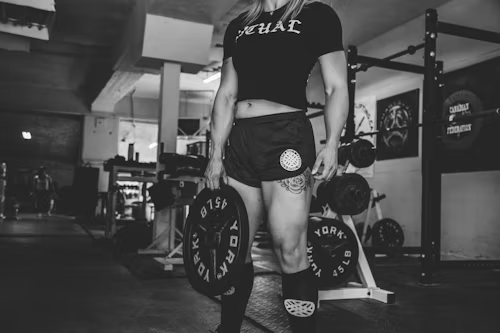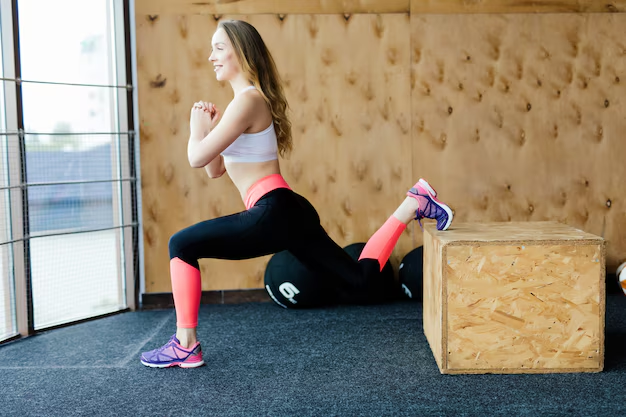Your legs are important. Having strong legs drastically improves your quality of life no matter your activity level. Yet, many people neglect their leg strength because, most notably, they hurt to train. Here are 3 compound leg exercises (and some optional modifications) that can absolutely skyrocket your strength.
The Squat

I’m going to start with what’s easily the most well-known compound leg exercise: the squat. This exercise is usually performed by placing a barbell behind your shoulders, and then progressing through a squat motion. It’s a motion very applicable in day-to-day life, and uses almost your entire body. As such, it holds the number 1 spot on this list.
Execution
The execution of a squat is extremely important. Improper form can have severe consequences, both immediately and in the long run. Considering this exercise uses very large muscle groups, the amount of stress improper form places on areas such as the lower back and knees can be substantial. (See: exercises for knee or back pain). I’ve compiled 4 of the most important tips for maintaining good form during a squat, to significantly reduce the chance of injury.
- Bracing
If you’re not familiar with the concept of bracing, it involves using your abdominal muscles and lungs to increase intra-abdominal pressure, keeping your spine in an optimal position. You can do this by taking a deep breath in, and squeezing your abs as though someone’s about to punch you. Try this, and feel how much more rigid your upper body gets! This rigidity is exactly what’s going to reduce your risk for injury to your spine during a squat; it keeps your back straight. Most spinal injuries of this type occur due to rounding of the lower back, which places the load on the spine in a position it’s not meant to have significant weight on.
- Stretches
A squat demands some amount of flexibility to perform. Flexibility in the ankles, knees, hips, back, and even shoulders is required for proper execution of this exercise. As such, performing a solid warm up routine including dynamic stretches is imperative for this exercise. Here are some ideas for these stretches.
- Leg position
This aspect of a squat is very much up to personal preference, and will take some experimenting with to figure out what works for you. Nonetheless, there are some important things to note about how leg position affects your squat.
A wider stance will put more emphasis on your glutes, and allow you to go through the full range of motion (ROM) while keeping your back straight a bit easier. A closer stance will target your quads more, challenge your balance, but will require more flexibility and strength to achieve the full ROM.
- Barbell position
This one is, again, up to personal preference. A higher barbell position (closer to your neck) will challenge the stabilizers in your back more, while a low barbell position (further down your back) will be more stable and allow you to lift more weight safely.
Remember that with this exercise, you should always use the safety racks so that in the event of failing a rep, you can dismount the weight without injury. Some common modifications you can add include using a smith machine in the place of a barbell to help with balance, or stand with your heels on a raised surface to better target the quads.
Functions

Functionality wise, the squat is easily one of the best exercises out there. It works most major muscles, as well as many stabilizer muscles. The muscles it primarily targets are the quads, glutes, and hamstrings. It also works your core, lower back, and calves. It is a great exercise for overall lower body strength, provided it is done safely and intelligently.
Bulgarian Split Squat

This exercise is renowned for the incredible burn it gives your legs during sets. The reason behind this burn is also exactly why this exercise made this list. As this exercise requires substantial balance, it targets most of the stabilizing muscles in your legs, which are not often used to that extent. This results in a strong burn and impressive strength adaptations. Performing this exercise consists of placing one foot on a raised surface behind you, and then squatting using your forward leg. It can be executed using your own bodyweight, or holding dumbbells.
Execution
As always, proper form is important. While Bulgarian split squats carry a lower risk of injury than the barbell squat discussed above this, the amount of stabilization necessary does pose a risk for knee injury. In addition, proper form is crucial for optimal muscle and strength gains with this exercise just as with any other. Again, here are some tips for maintaining proper form during your execution:
- Type of load
This exercise is versatile in the sense that it can be performed using different types of load. These can include bodyweight, dumbbells, a barbell, weighted vests, or even resistance bands. The choice of load should be based on skill/experience, and other physical attributes such as your ability to balance. Using bodyweight will always be the easiest to perform this with, while holding two dumbbells by your side is a close second. Using a barbell across your shoulders or other load methods will challenge your balance much more and should be used only if you have substantial experience.
- Footwear
Choice of footwear is very important with this exercise. Make sure to wear a hard-sole shoe instead of a shoe that has a softer sole to ensure you have a solid base to stand on. Shoes with some ankle support may also be beneficial. You can also go shoeless and skip any grief over proper footwear.
- Choice of prop
The support you place your back foot on is important. It shouldn’t be too high, or it may compromise your ROM, and if it’s too low it can reduce the effectiveness of the exercise. Choose a prop around knee height for optimal results. A bench found in most gyms works well for this purpose.
You can easily personalize this exercise based on what’s most effective for you. As mentioned previously, there are many different ways of adding resistance instead of the classic dumbbells. You can also experiment with the height of the prop if you want to target different muscles.
Functions

Bulgarian split squats are great for all-purpose functionality. They challenge your stabilizers more than most other leg exercises, leading to improved balance and a more aesthetic appearance to your legs. Performing this exercise with modifications such as only holding weight in one hand can target your trunk stabilizers as well. The versatility that comes with this exercise makes it a strong addition to your workout regimen.
Box jumps

It wouldn’t be a complete list of compound leg exercises without one that targets your calves. Don’t get me wrong – the exercises listed above do work your calves, but not to the explosive extent that box jumps do. Box jumps target your entire legs in an explosive manner (see: what is explosive training). This exercise requires jumping from the floor onto a stable surface that’s, perhaps unsurprisingly, usually in the form of a wooden box. This piece of equipment can be found in most gyms.
Execution
Box jumps make their way onto social media quite frequently with videos of people tripping or falling while performing them. The concept of them isn’t overly complicated per se; it’s just jumping. However, not knowing your limits and not taking muscle fatigue into account can easily lead to a misjudgment that causes a TikTok-worthy fail. Here are some tips for reducing the chance of a fall during box jumps:
- Height of the box
Many boxes in gyms will have 2 or 3 different height options that simply require flipping the box to access. At the gym I frequent, for example, these options are 20″, 24″, and 36″. What side you use is important, as using one that’s too tall will likely end in you slamming your shins into the top corner, and possibly tripping and falling. Ouch. Start by using a side that you’re confident you can jump to, and then work your way up.
- Expect to tire
Another common pitfall with this exercise is not considering that your legs will tire out during your sets. This will inevitably result in you not being able to jump as high, so make sure to use a box height that you can reach during all reps of your set. You can always just clear the top by a bit more in the first few reps – it’s not managing to clear it that can lead to unfavorable outcomes.
- Use other objects
The boxes found in most gyms are usually at least 18-20″ in height. Depending on skill and fitness level, this can prove a bit extreme for some individuals. In this case, plenty of other options exist, such as stacking some bumper plates, or simply doing the jumps straight up.
Box jumps can be easily made more or less challenging. To make them easier, you can use other objects as mentioned above, or have someone spot you if you’re worried about falling. To make them more challenging, you can use the higher sides of the box, or use weight in the form of a weighted vest, by holding a dumbbell, or by using ankle or wrist weights.
Functions

As I’ve already mentioned, box jumps build explosive power in your legs. This translates well into many other categories of life such as vacations with physical activity like hiking, or just walking around in day-to-day life. This explosiveness also will improve your performance in other types exercise such as biking, running, or even swimming! If you want a better quality of life and enhanced athletic performance, this exercise is a must.
Overview
These 3 compound leg exercises are all great additions to your workout routine. Better yet, you can even use all 3 of them in the same workout safely! Together they target all the muscles in your legs, as well as your core and back. The exercises included in this list, plus the modifications I discussed, can be used for any age or skill level. They are all extremely versatile exercises with a solid place in any leg workout. For more information on improving leg strength, see strength, hypertrophy, or explosiveness? and common pitfalls in leg training.
